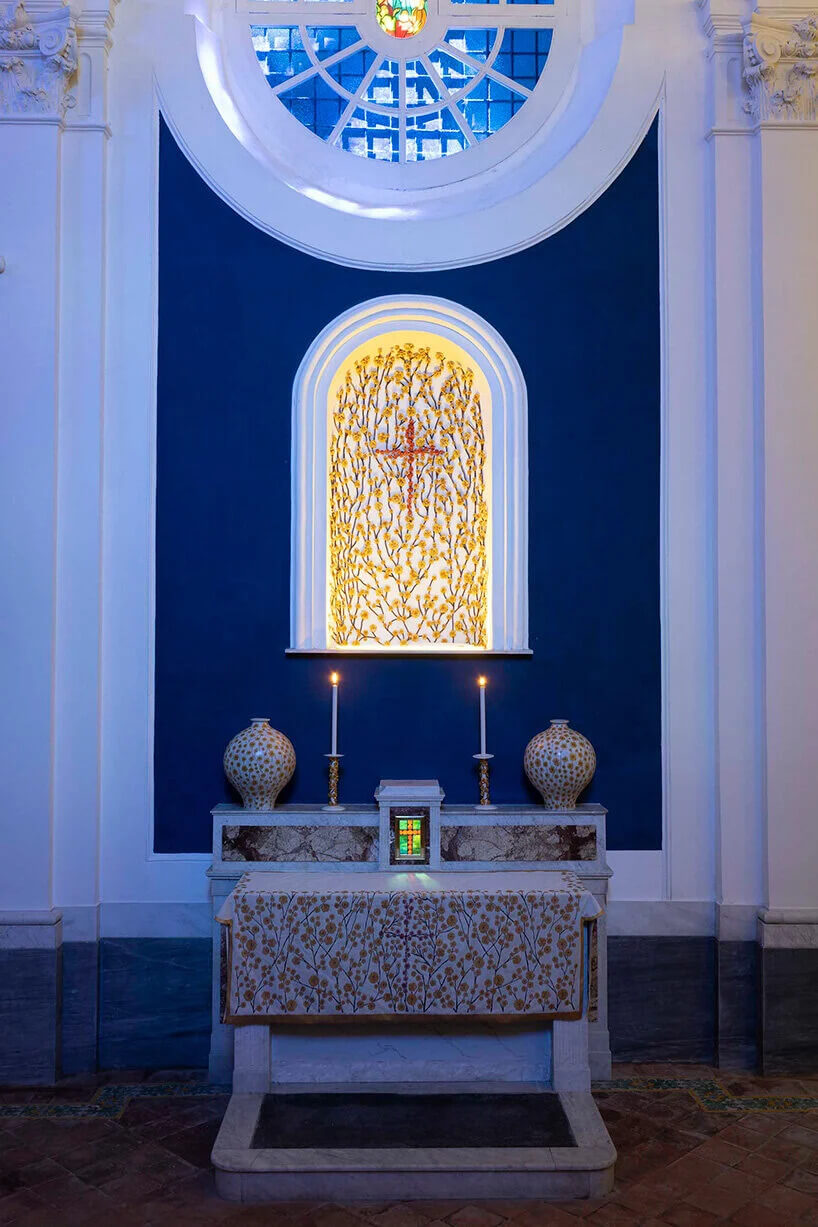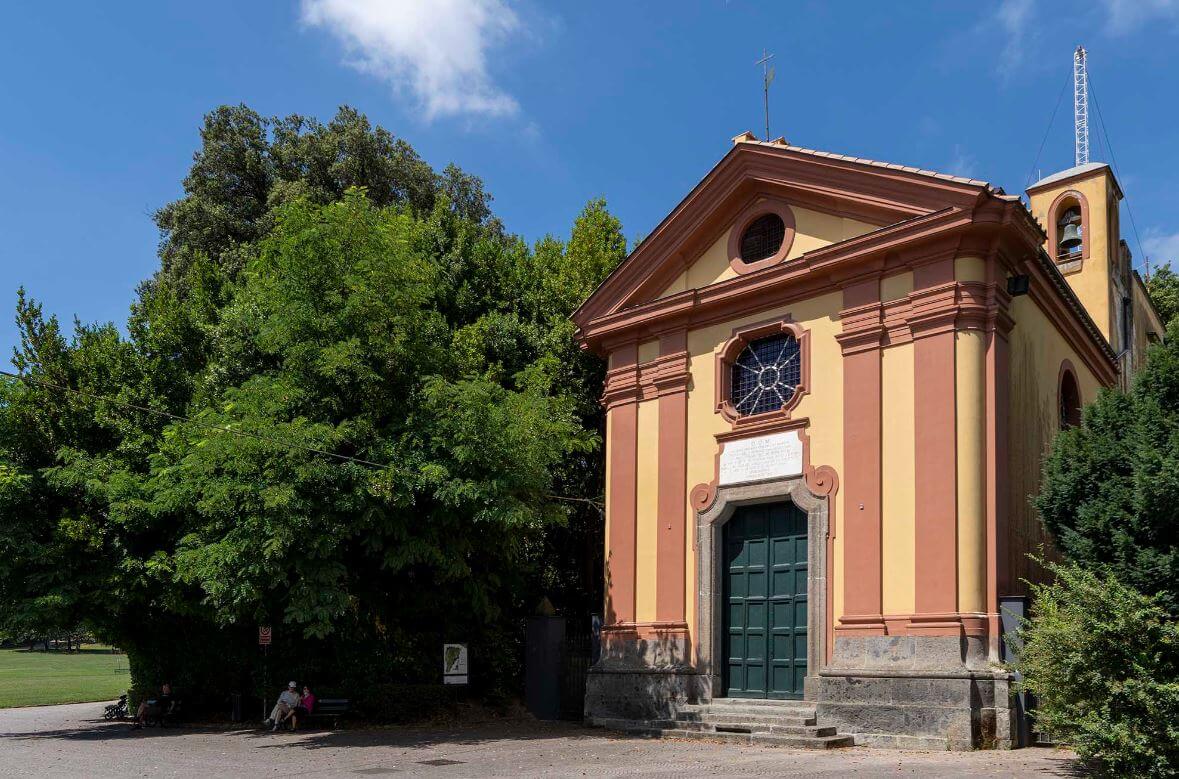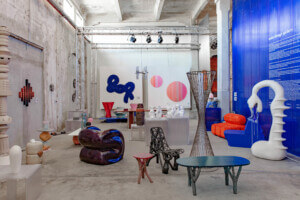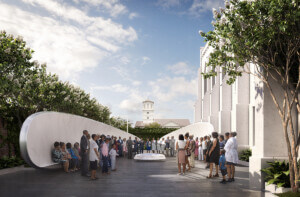After shuttering its doors to the public for more than 50 years, the Church of San Gennaro in Naples reopened last week with an immersive art installation inspired by the rich history and natural splendors of the southern Italian city. First completed in 1745 by the architect and set designer Ferdinando Sanfelice, the baroque church was brought into the 21st century through the addition of vibrantly colored stained glass (produced by master glassmaker Antonio Perotti) depicting religious and natural figures that animate its interior. The inside is populated by newly created porcelain objects, textiles, and murals foregrounding the repainted ultramarine blue and crisp white walls. Looking up, the formerly blank ceiling is now adorned with a constellation of stars brightened by hidden spotlights.

The installation is a rare act of subtlety from Santiago Calatrava, the world-renowned Spanish architect known for grandiose feats of engineering such as the Milwaukee Art Museum, World Trade Center Transportation Hub, and City of Arts and Sciences in Valencia, Spain. Yet, as an architect long inspired by baroque architecture, known for its theatrical flourishes and complex geometry, Calatrava was able to weave his signature design gestures within those of the 18th-century church by responding to its expressive detailing and handicraft associated with Italy. “The installation allows the creation of a global concept in which different arts (porcelain, weaving, enamelling, painting) converge in an autonomous work that speaks from the past to the present towards the future,” Calatrava explained. In the niches on each side of the altar, for example, he painted murals of doves in motion, a common source of inspiration for a designer whose body of work often captures the spirit of flight.

“The restoration of the Church of San Gennaro is an extraordinary experiment that mixes contemporary and baroque art in an unprecedented way,” Dario Franceschini, the Italian Minister of Culture, announced shortly after the installation’s unveiling. “For a long time we felt that it was not possible to include contemporary art in the Italian historical cultural heritage. I thank the architect Calatrava for this beautiful gift and the quality of the works which have made our country richer and more beautiful.” In addition to Calatrava’s intervention, the church was thoroughly restored inside and out, including the organ and bells that now daily greet visitors with 18th-century melodies.
The church is the newest tourist attraction in Parque de Capodimonte, a 330-acre park designed in 1742 by Ferdinando Sanfelice that was once the summer residence and hunting lodge of King Charles of Bourbon, the former King of Naples and Sicily. Calatrava’s installation was unveiled in coordination with Nella Luce di Napoli (In the Light of Naples), an exhibition of over 400 objects produced by the architect now on display at the nearby Museo e Real Bosco di Capodimonte that includes models, sculptures, drawings, paintings, and ceramics. The Church of San Gennaro reflects only the latest of several works by Calatrava in the country, including the Quarto Ponte Sul Canal Grande in Venice, the Reggio Emilia Ponte, and the Ponte Sul Crati in Cosenza.











